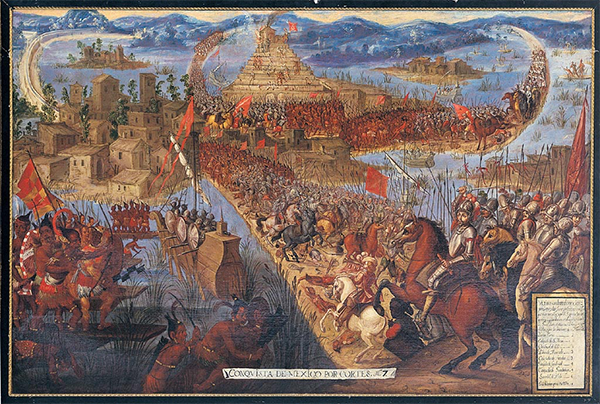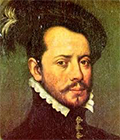New Spain
Part 1: Setting the Stage New Spain existed for three centuries, ruling over a wide swathe of territory in the New World and in the Pacific. It was an extension of the reign of a series of Spanish monarchs. 
Historians generally date the start of New Spain to the fall of Tenochtitlan and the conquest of the Aztec Empire by the conquistador Hernán Cortés and others. Cortés had destroyed the Aztec capital and founded a new settlement, Mexico City, in its shadow. The Kingdom of New Spain came into existence on Aug. 18, 1521. The ruler of Spain at that time was Charles I, who later became the Holy Roman Emperor Charles V. 
The king proclaimed Cortés (left) governor and captain-general of New Spain in 1522. Under his leadership, it grew in influence and power, its representatives fanning out across Mesoamerica to establish relations with neighboring city-states. He proved far-thinking in one regard, setting up the encomienda system, a remnant of the feudal system in which Spanish nobles got the right to a certain number of native people who would provide labor as a means of maintaining the conqueror-conquered relationship. The conquered, in this case, also had to tribute, or taxes; and since money was in short supply, that tribute took several forms, among them animal food, various crops, and even raw metals. In return, the encomendero, or leader, would guarantee protection against attack. The Spanish Crown encouraged such enterprises, insisting that that protection also take the form of learning the Spanish language and the Christian faith. In 1524, Charles created the Council of the Indies, to administer a large amount of land, including Spanish possessions in the Caribbean, Central America, down the western coast of South America, and up into North America a bit. The council acted in the king's name, deciding the particulars of many aspects of life in the Spanish-controlled New World. The king in 1527 announced the creation of the audiencia, the equivalent of a high court that could settle legal matters in the New World. One of the well-known judges on this court was Nuno de Guzman, who was eventually sent back to Spain to answer on charges of corruption. One of his opponents was Juan de Zumarraga, the first bishop of Mexico. Guzman's replacement, Sebastian Ramirez de Fuenleal, proved to be the kind of judge that the king had in mind and reversed the trend of corruption that Guzman had fostered. 
Much of the focus in the Spanish possession of New World lands was on Christianity, especially as Spanish rule continued through the years. The new settlements greatly encouraged the conversion of native peoples to the Christian faith, through means both encouraging and stifling. Spanish leaders brought the Inquisition to Mexico and kept it there for centuries. It was nowhere near as intensive or as deadly as it was in Spain, however.  Next page > Settling in, Fighting Wars > Page 1, 2, 3 |
|
Social Studies for Kids
copyright 2002–2026
David White




